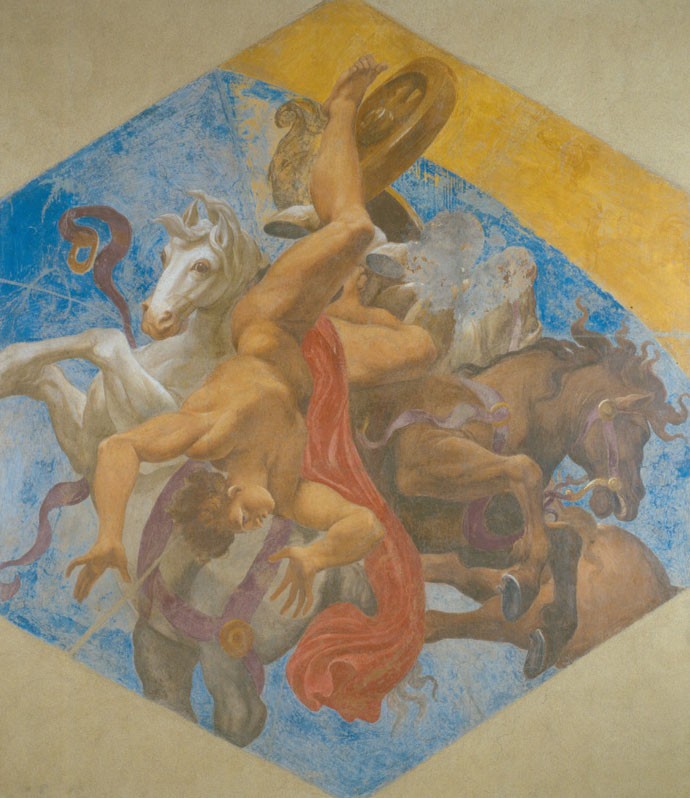The Reference room
In the Reference Room, above the door that communicates with the Archaeological Museum, you can admire the fragment "The fall of Phaeton" by Ludovico Carracci, part of a fresco which was torn in 1861 from a ceiling of Montecalvi Palace.

In this fresco Phateon, his cart and four horses sprint forward through the air in a wild mixture. The composition represents Ludovico's riskiest experiment in the field of difficult foreshortening.
Pellegrino Tibaldi's riskiest foreshortenings are the immediate source of inspiration for Ludovico when he tackles these kinds of problems both there and, earlier, at the Sampieri Palace. "The fall of Phaeton" by Tibaldi himself is a small fresco in Poggi Palace, now destroyed but handed down by an engraving by Bartolomeo Crivellari, which provides the model to the frontal view of the head-to-head fall [...]. In Victoria and Albert Museum there is a fine preparatory drawing by Ludovico, realised in black pencil, which elaborates the foreshortening of the nude figure.
Guido Zucchini affirmed that the Montecalvi frescoes were realised after the Sampieri project, dating them at the end of the '90s of the 16th century. They can be dated a little earlier, but, in any case, they date back between 1596 and 1599. Very similar to the fresco placed on the ceiling of Sampieri Palace is the intense colour, with Phaeton's strawberry-red drapes and purple-coloured fittings that stand out against the bright turquoise sky. At the top of the composition there is the zodiac sign of Sagittarius, painted in monochrome on the vivid golden arc of the sun. (Taken with adaptations from the G. Geigenbaum's card number 49, "Catalogue of paintings", in Ludovico Carracci, edited by A. Emiliani, Bologna, Nuova Alfa Editoriale, 1993, pages 105-107).
